
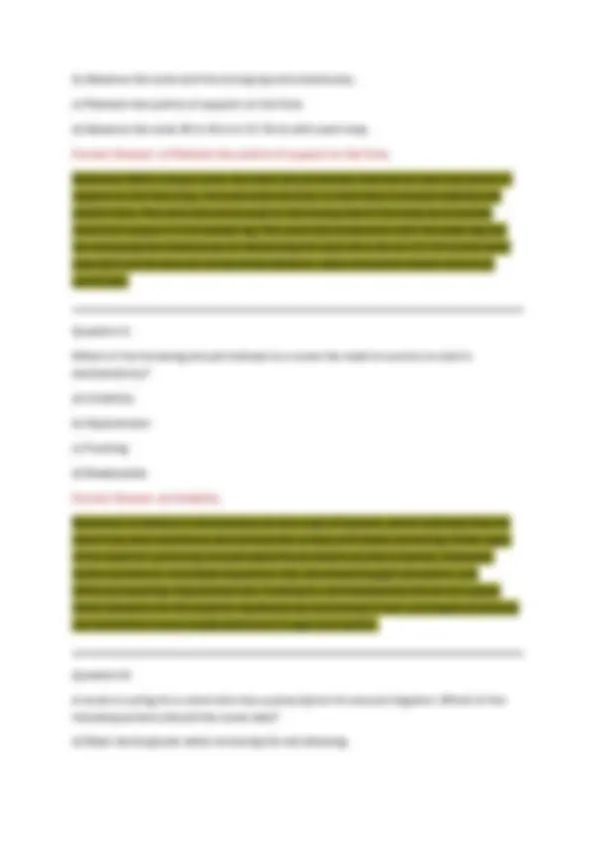
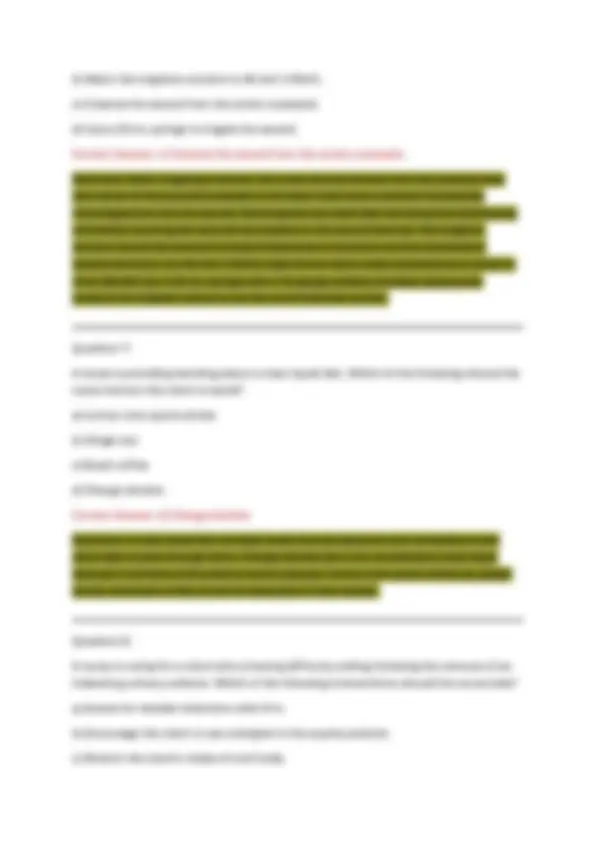
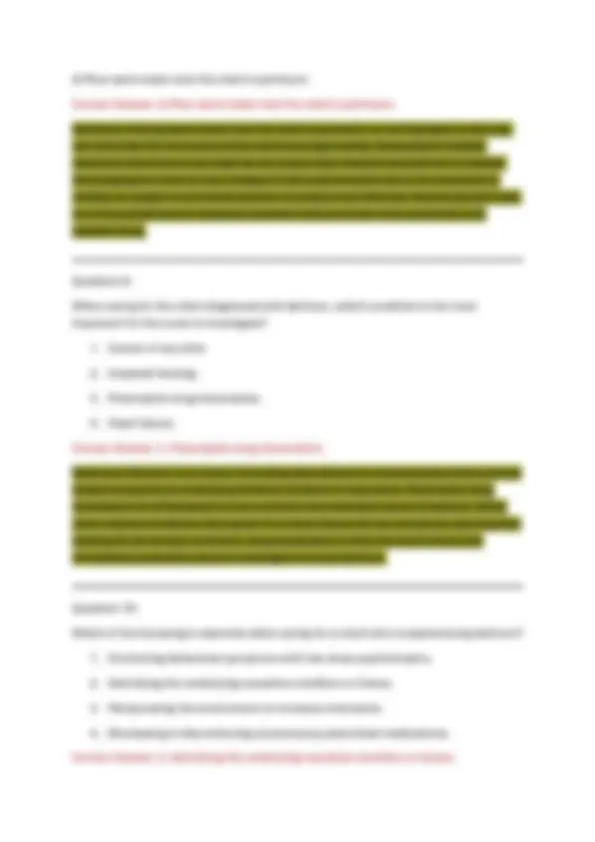
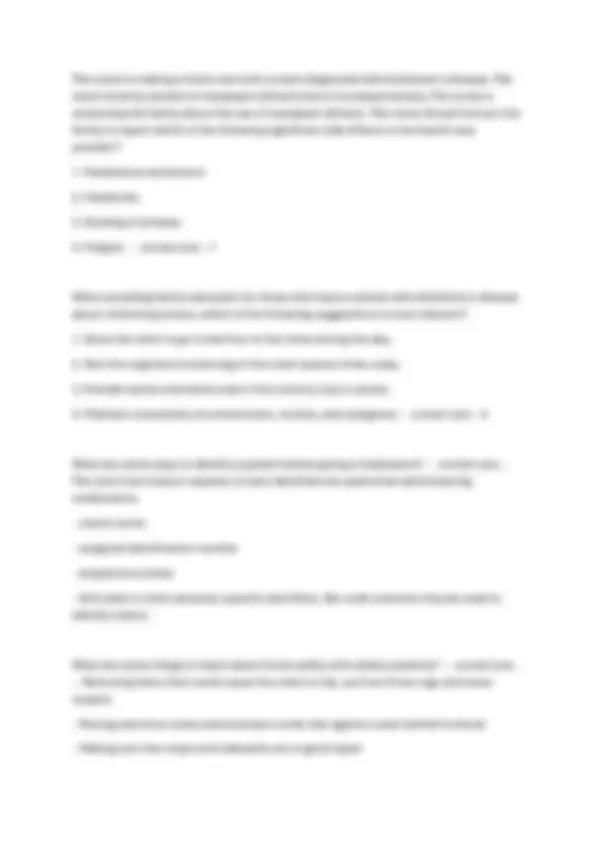
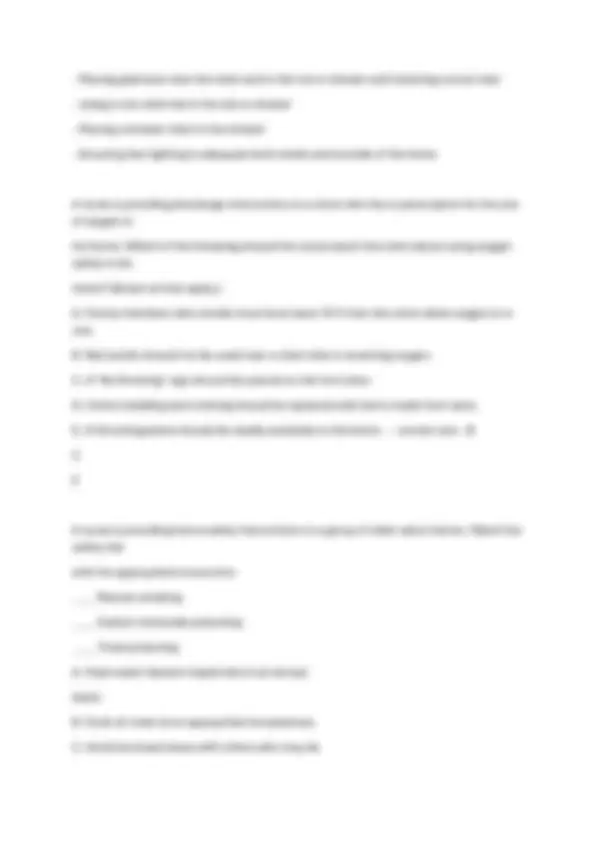
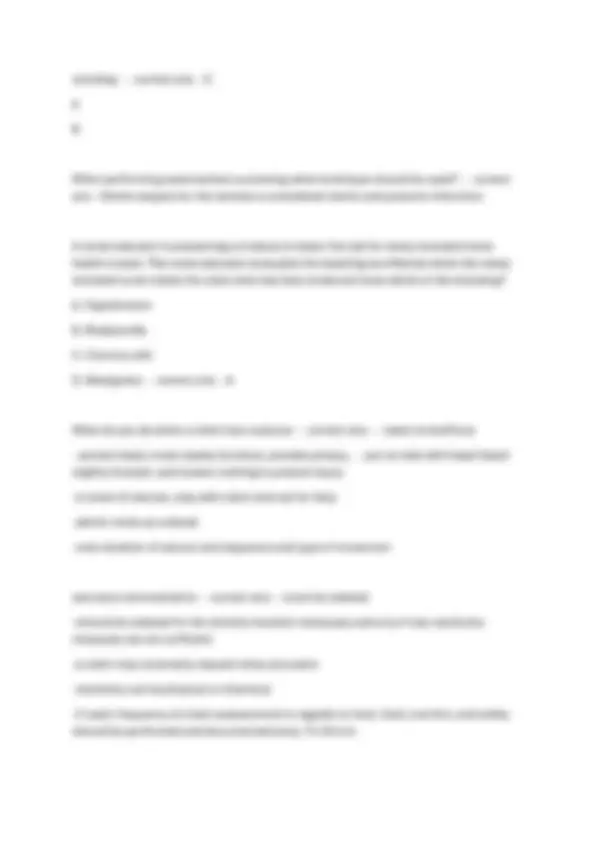
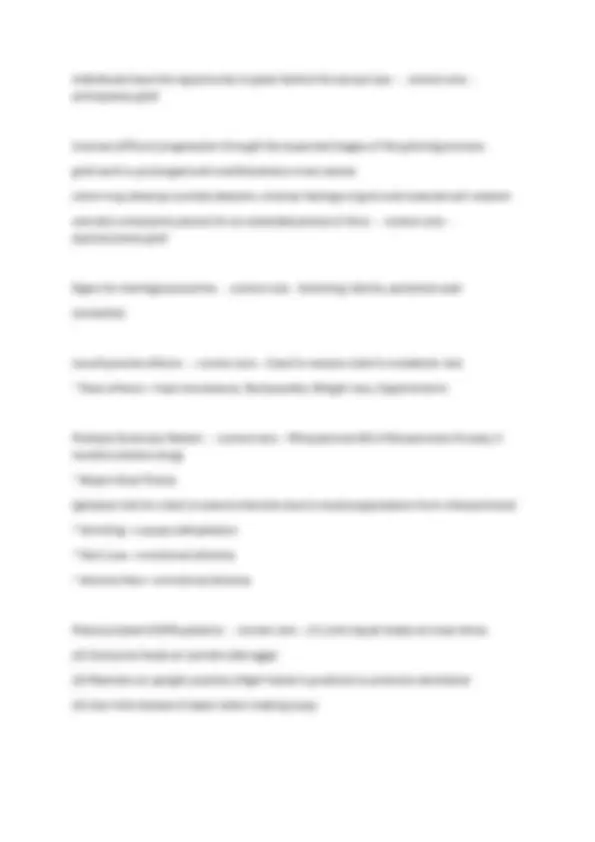
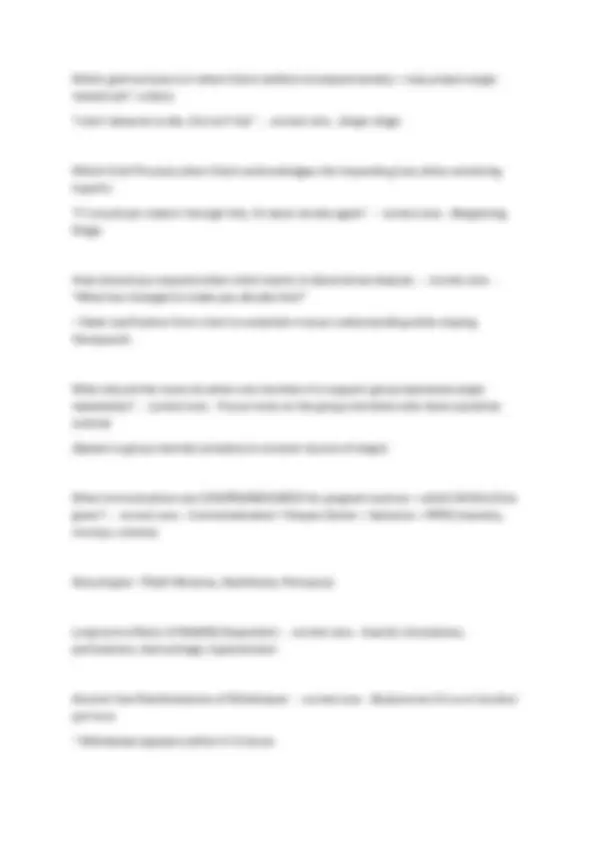
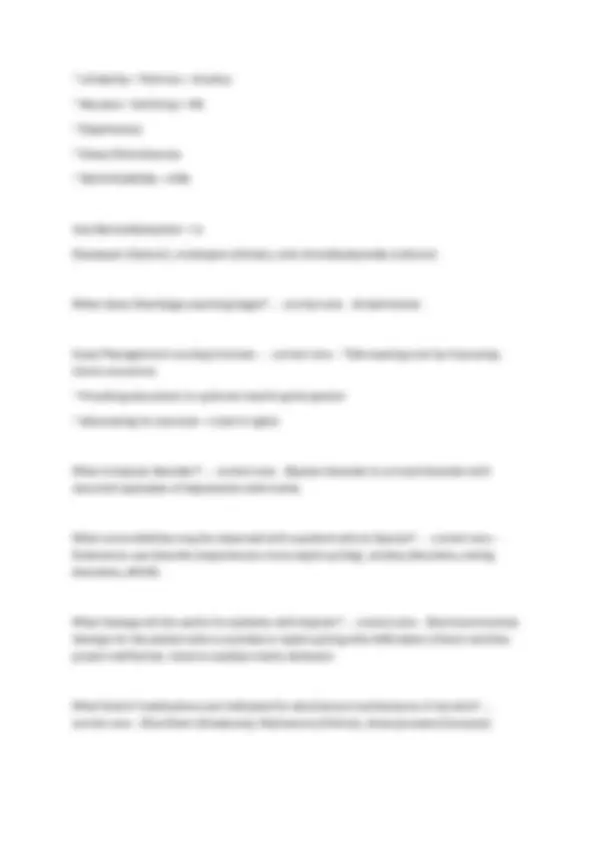
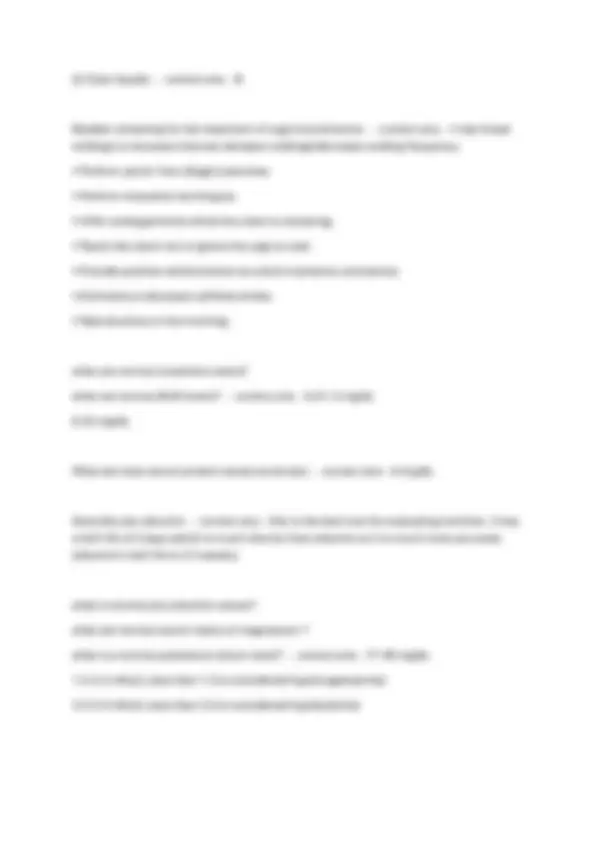
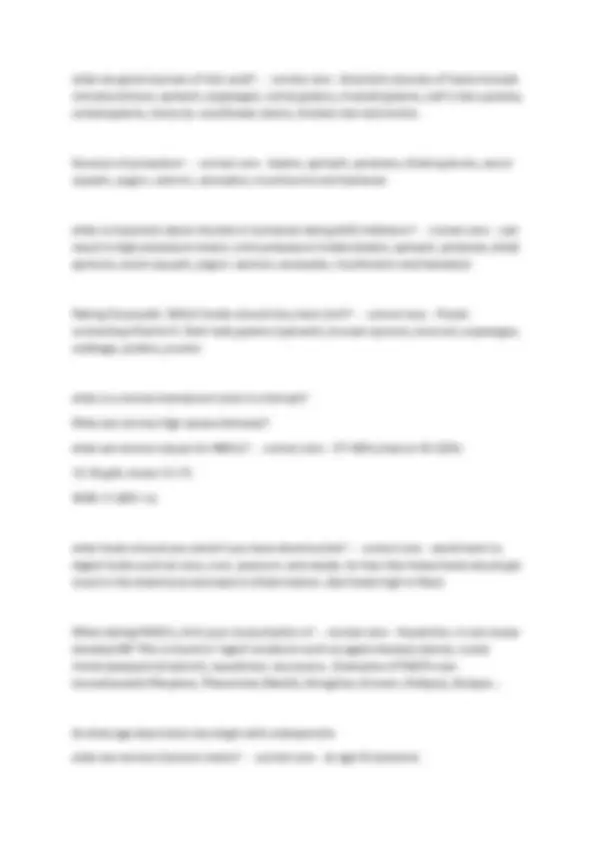
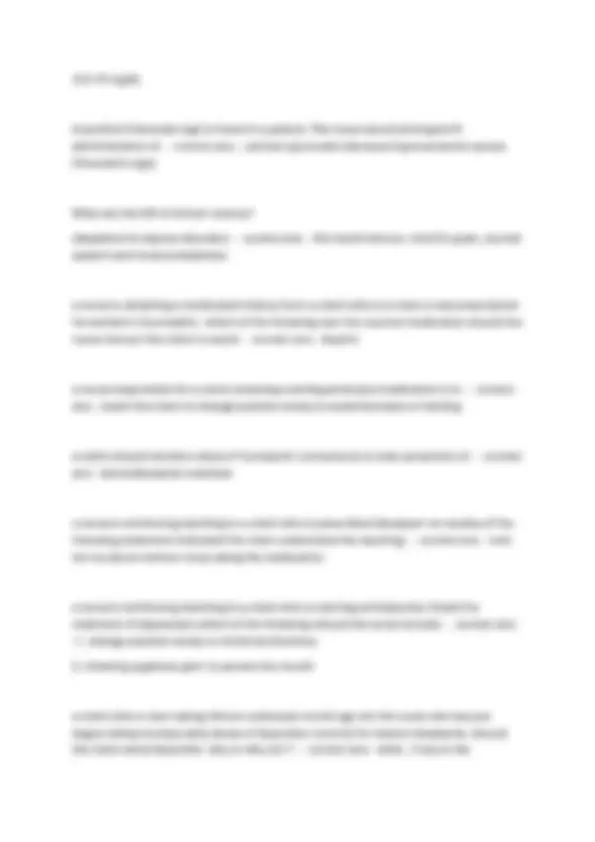
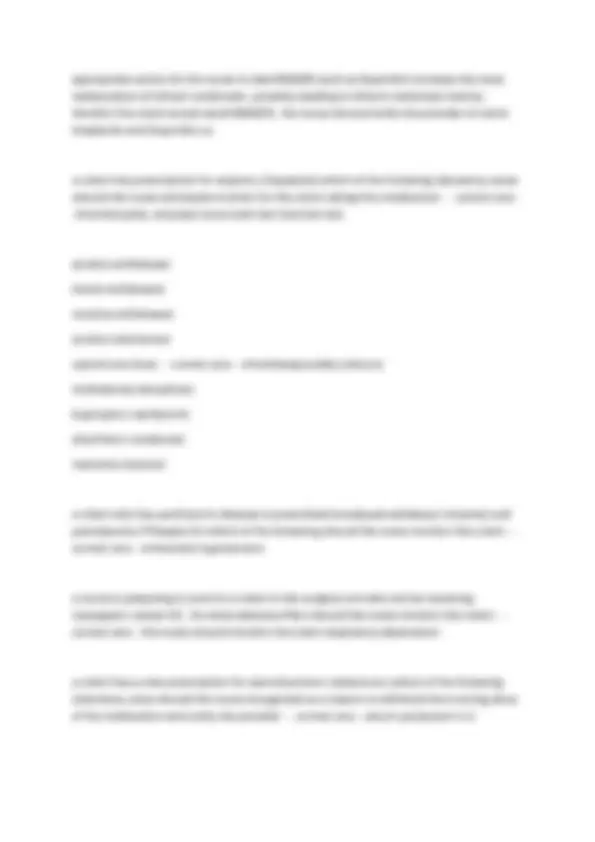
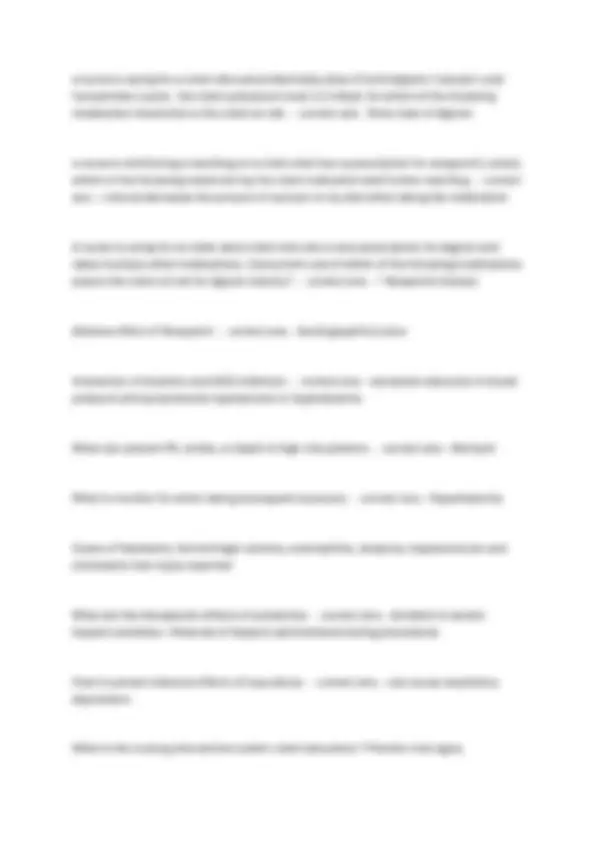
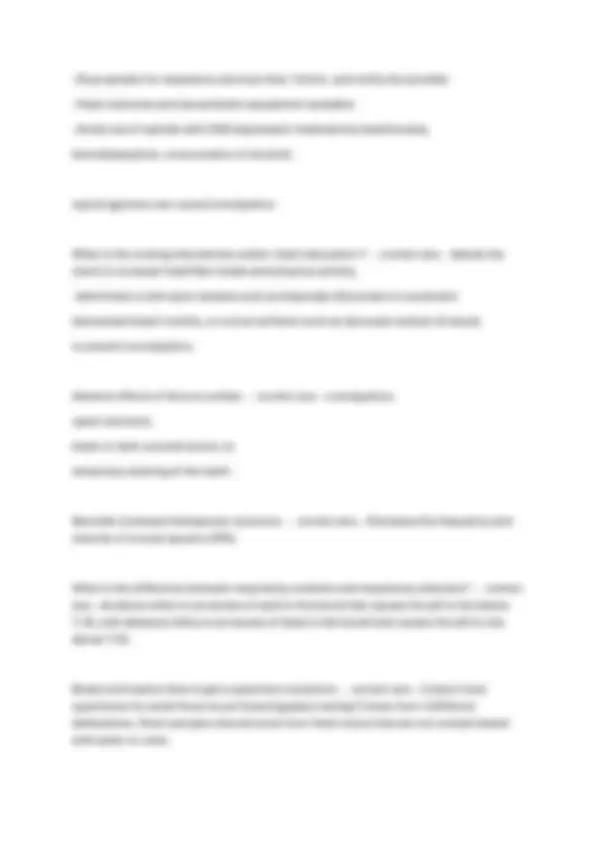
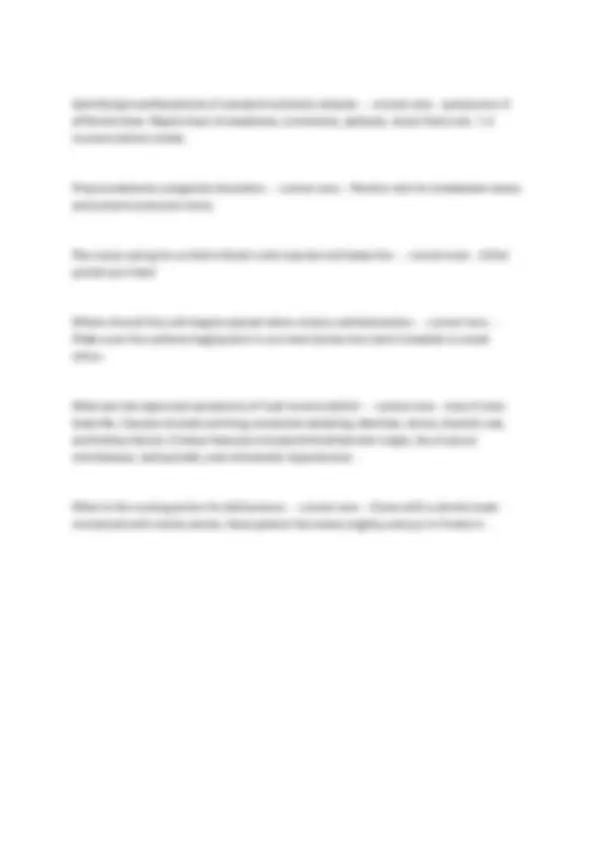


Study with the several resources on Docsity

Earn points by helping other students or get them with a premium plan


Prepare for your exams
Study with the several resources on Docsity

Earn points to download
Earn points by helping other students or get them with a premium plan
Community
Ask the community for help and clear up your study doubts
Discover the best universities in your country according to Docsity users
Free resources
Download our free guides on studying techniques, anxiety management strategies, and thesis advice from Docsity tutors
A.T.I PN Comprehensive Predictor 2025: Complete Exam Prep Guide with Practice Questions, Rationales, and Proven Strategies for Practical Nursing Students
Typology: Exams
1 / 24

This page cannot be seen from the preview
Don't miss anything!

















Here are multi-choice questions and rationales for each of the provided scenarios, with the correct answer indicated. Question 1: A nurse is caring for a client who has an NG tube that is to be irrigated every 8 hr. Which of the following should be used to irrigate the tube in order to maintain fluid and electrolyte balance? a) Tap water b) Sterile water c) 0.9% sodium chloride d) 0.45% sodium chloride Correct Answer: c) 0.9% sodium chloride Rationale: 0.9% sodium chloride (normal saline) is an isotonic solution, meaning it has a similar solute concentration to body fluids. Using normal saline for NG tube irrigation helps to prevent electrolyte imbalance, especially the loss of sodium, which can occur if hypotonic solutions like tap water or 0.45% sodium chloride are used, or if hypertonic solutions are used without careful consideration. Sterile water (b) is hypotonic and does not contain electrolytes, making it less ideal for maintaining balance. Question 2: A nurse is caring for a client who needs a 24-hr urine collection initiated. Which of the following client statements indicates an understanding of the procedure?
a) "I had a bowel movement, but I was able to save the urine." b) "I have a specimen in the bathroom from about 30 minutes ago." c) "I flushed what I urinated at 7 am and have saved the rest since." d) "I drink a lot, so I will fill up the bottle and complete the test quickly." Correct Answer: c) "I flushed what I urinated at 7 am and have saved the rest since." Rationale: To start a 24-hour urine collection, the first void of the collection period (in this case, 7 am) is typically discarded to ensure the collection accurately reflects urine produced after the start time. All subsequent urine for the next 24 hours must be collected. Options (a) and (b) indicate incomplete or incorrect collection. Option (d) shows a misunderstanding of the time-sensitive nature of the test. Question 3: A nurse is reviewing the medical records of a client who has a pressure ulcer. Which of the following is an expected finding? a) Serum albumin level of 3 g/dL b) HDL level of 90 mg/dL c) Norton scale score of 18 d) Braden scale score of 20 Correct Answer: a) Serum albumin level of 3 g/dL Rationale: A serum albumin level of 3 g/dL is below the normal range (3.5−5.5 g/dL) and indicates protein malnutrition. Malnutrition, particularly protein deficiency, is a significant risk factor for the development and impaired healing of pressure ulcers. Therefore, it is an expected finding in a client with a pressure ulcer. An HDL level of 90 mg/dL (b) is a high and healthy level. A Norton scale score of 18 (c) or a Braden scale score of 20 (d) would indicate a low risk for pressure ulcer development, not a client who already has one. Question 4: A nurse is reinforcing teaching regarding the use of a cane to a client who has left-leg weakness. Which of the following should the nurse include in the teaching? a) Use the cane on the weak side of the body.
b) Warm the irrigation solution to 40.5∘C (105∘F). c) Cleanse the wound from the center outwards. d) Use a 20 mL syringe to irrigate the wound. Correct Answer: c) Cleanse the wound from the center outwards. Rationale: When irrigating a wound, the nurse should cleanse from the cleanest area (the center of the wound) outwards to the least clean area to prevent introducing microorganisms into the wound. Sterile gloves are used after removing the old dressing and before touching the new sterile supplies or the wound itself (a). The irrigation solution should be warmed to body temperature to promote comfort and prevent vasoconstriction, but 40.5∘C ( 105 ∘F) might be too warm; body temperature is closer to 37 ∘C (98.6∘F) (b). A 20 mL syringe with a 19 - gauge catheter provides appropriate pressure for irrigation (d) but is not the most important action. Question 7: A nurse is providing teaching about a clear liquid diet. Which of the following should the nurse instruct the client to avoid? a) Lemon-lime sports drinks b) Ginger ale c) Black coffee d) Orange sherbet Correct Answer: d) Orange sherbet Rationale: A clear liquid diet includes foods that are liquid at room temperature and allow light to pass through them. Orange sherbet (d) is not considered a clear liquid because it contains milk products and is opaque. Lemon-lime sports drinks (a), ginger ale (b), and black coffee (c) are all examples of clear liquids. Question 8: A nurse is caring for a client who is having difficulty voiding following the removal of an indwelling urinary catheter. Which of the following interventions should the nurse take? a) Assess for bladder distention after 6 hr. b) Encourage the client to use a bedpan in the supine position. c) Restrict the client's intake of oral fluids.
d) Pour warm water over the client's perineum. Correct Answer: d) Pour warm water over the client's perineum. Rationale: Pouring warm water over the client's perineum, or running water in the sink, can stimulate the micturition reflex and encourage voiding. Assessing for bladder distention after 6 hours (a) might be too long to wait; frequent assessment is needed. Encouraging the client to use a bedpan in the supine position (b) is not conducive to voiding; an upright or commode position is usually more effective. Restricting oral fluids (c) is contraindicated as adequate hydration helps promote urine production and bladder filling. Question 9: When caring for the client diagnosed with delirium, which condition is the most important for the nurse to investigate?
Rationale: For a client with dementia who wanders, the priority is to ensure their safety while respecting their need for movement. Assessing the client's gait for steadiness helps identify potential fall risks, allowing the nurse to intervene with appropriate measures (e.g., assistive devices, closer supervision). Administering PRN psychotropics like haloperidol (1) or lorazepam (4) to decrease walking is a chemical restraint and should be avoided if possible, as it can worsen confusion and lead to adverse effects. Restraining the client (3) is a physical restraint and should be a last resort, as it can increase agitation, anxiety, and lead to complications like deconditioning and pressure ulcers. During a home visit to an elderly client with mild dementia, the client's daughter reports that she has one major problem with her mother. She says, "She sleeps most of the day and is up most of the night. I can't get a decent night's sleep anymore." Which suggestions should the nurse make to the daughter? Select all that apply.
The nurse is making a home visit with a client diagnosed with Alzheimer's disease. The client recently started on lorazepam (Ativan) due to increased anxiety. The nurse is cautioning the family about the use of lorazepam (Ativan). The nurse should instruct the family to report which of the following significant side effects to the health care provider?
smoking. - - correct ans- - C A B When performing nasotracheal suctioning what technique should be used? - - correct ans- - Sterile asepsis bc the trachea is considered sterile and prevents infections A nurse educator is presenting a module on basic first aid for newly licensed home health nurses. The nurse educator evaluates the teaching as effective when the newly licensed nurse states the client who has heat stroke will have which of the following? A. Hypotension B. Bradycardia C. Clammy skin D. Bradypnea - - correct ans- - A What do you do when a client has a seizure - - correct ans- -- lower to bed/floor
What position is good to use for a patient who is at high risk for a pressure ulcer - - correct ans- - 30 degree lateral position is recommended for clients at risk for pressure ulcers health promotion (injury prevention-suffocation): infant (birth-1 yr) - - correct ans- -- avoid plastic bags
individuals have the opportunity to greet before the actual loss - - correct ans- - anticipatory grief involves difficult progression through the expected stages of the grieving process grief work is prolonged and manifestations more severe client may develop suicidal ideation, intense feelings of guilt and lowered self-esteem somatic complaints persist for an extended period of time - - correct ans- - dysfunctional grief Signs for meningococcemia - - correct ans- - Vomiting, febrile, petechial rash (unstable) Levothyroxine effects - - correct ans- - Used to restore client's metabolic rate
Which grief process is it when Client exhibits increased anxiety + may project anger toward self + others "I don't deserve to die, this isn't fair" - - correct ans- - Anger stage Which Grief Process when Client acknowledges the impending loss while remaining hopeful "If I could just make it through this, I'd never smoke again" - - correct ans- - Bargaining Stage How should you respond when client wants to discontinue dialysis - - correct ans- - "What has changed to make you decide this?" = Seek clarification from client to establish mutual understanding while staying therapeutic What should the nurse do when one member of a support group expresses anger repeatedly? - - correct ans- - Focus more on the group members who have a positive outlook (Speak to group member privately to uncover source of anger) What immunizations are CONTRAINDICATED for pregnant women + which SHOULD be given? - - correct ans- - Contraindicated = Herpes Zoster + Varicella + MMR (measles, mumps, rubella) Should give = TDaP (Tetanus, Diphtheria, Pertussis) Long term effects of NSAIDS (Ibuprofen) - - correct ans- - Gastric Ulcerations, perforations, hemorrhage, hypertension Alcohol Use Manifestations of Withdrawal - - correct ans- - Body burns 0.5 oz of alcohol per hour
Teaching points for naltrexone (Vivitrol)? - - correct ans- - Take with meals to supress GI distress. Monthly IM injections should be suggested for patients who have difficulty to adhering to the medication regimen. A nurse is caring for a client who underwent a subtotal gastrectomy. To manage dumping syndrome, the nurse should advise the client to: a) restrict fluid intake to 1 qt (1,000 ml)/day. b) drink liquids only between meals. c) don't drink liquids 2 hours before meals. d) drink liquids only with meals. - - correct ans- - B A patient who has undergone colostomy surgery is experiencing constipation. Which of the following interventions should a nurse consider for such a patient? a) Instruct the patient to keep a record of food intake b) Instruct the patient to avoid prune or apple juice c) Suggest fluid intake of at least 2 L per day d) Assist the patient regarding the correct diet or to minimize food intake - - correct ans-
d) The client maintains a sedentary lifestyle. - - correct ans- - A Patients diagnosed with esophageal varices are at risk for hemorrhagic shock. Which of the following is a sign of potential hypovolemia? a) Hypotension b) Bradycardia c) Warm moist skin d) Polyuria - - correct ans- - A The nurse is assessing a client with a bleeding gastric ulcer. When examining the client's stool, which of the following characteristics would the nurse be most likely to find? a) Green color and texture b) Black and tarry appearance c) Clay-like quality d) Bright red blood in stool - - correct ans- - B After teaching a group of students about the various organs of the upper gastrointestinal tract and possible disorders, the instructor determines that the teaching was successful when the students identify which of the following structures as possibly being affected? a) Large intestine b) Ileum c) Stomach d) Liver - - correct ans- - C A nurse is caring for a client with active upper GI bleeding. What is the appropriate diet for this client during the first 24 hours after admission? a) Skim milk b) Nothing by mouth c) Regular diet
what are good sources of folic acid? - - correct ans- - Excellent sources of folate include romaine lettuce, spinach, asparagus, turnip greens, mustard greens, calf's liver, parsley, collard greens, broccoli, cauliflower, beets, chicken liver and lentils. Sources of potassium - - correct ans- - beans, spinach, potatoes, dried apricots, acorn squash, yogurt, salmon, avocados, mushrooms and bananas what is important about the diet of someone taking ACE inhibitors? - - correct ans- - can result in high potassium levels. Limit potassium intake (beans, spinach, potatoes, dried apricots, acorn squash, yogurt, salmon, avocados, mushrooms and bananas) Taking Coumadin. Which foods should the client limit? - - correct ans- - Foods containing Vitamin K. Dark leafy greens (spinach), brussel sprouts, broccoli, asparagus, cabbage, pickels, prunes what is a normal hematocrit level in a female? What are normal Hgb values (female)? what are normal values for WBCs? - - correct ans- - 37 - 48% (male is 42-52%) 12 - 16 g/dL (male 13-17) 4500 - 11,000 / uL what foods should you avoid if you have diverticulitis? - - correct ans- - avoid hard-to- digest foods such as nuts, corn, popcorn, and seeds, for fear that these foods would get stuck in the diverticula and lead to inflammation. (Eat foods high in fiber) When taking MAOI's, limit your consumption of - - correct ans- - thyramine--it can cause elevated BP. This is found in "aged" products such as aged cheeses (swiss), cured meats (pepperoni/salomi), sauerkraut, soy sauce...Examples of MAOI's are: Isocarboxazid (Marplan), Phenelzine (Nardil), Selogilive, Emsam, Eldepryl, Zelapar... At what age does bone loss begin with osteoporotis what are normal Calcium levels? - - correct ans- - at age 35 (women)
8.6-10 mg/dL A positive Chvosteks sign is found in a patient. The nurse would anticipate IV administration of - - correct ans- - calcium gluconate (because hypocalcemia causes Chvostek's sign) What are the S/S of lithium toxicity? (depakote for bipolar disorder) - - correct ans- - fine hand tremors, mild GI upset, slurred speech and muscle weakness a nurse is obtaining a medication history from a client who is to start a new prescription for warfarin ( Coumadin). which of the following over the counter medication should the nurse instruct the client to avoid - - correct ans- - Aspirin a nurse responsible for a client receiving a antihypertensive medication is to - - correct ans- - teach the client to change position slowly to avoid dizziness or fainting a client should receive a dose of flumazenil ( romazicon) to treat symptoms of - - correct ans- - benzodiazepine overdose a nurse is reinforcing teaching to a client who is prescribed diazepam tor anxiety of the following statement indicated the client understand the teaching - - correct ans- - I will tell my doctor before I stop taking the medication a nurse is reinforcing teaching to a client who is starting amitriptyline ( Elavil) for treatment of depression which of the following should the nurse include - - correct ans-